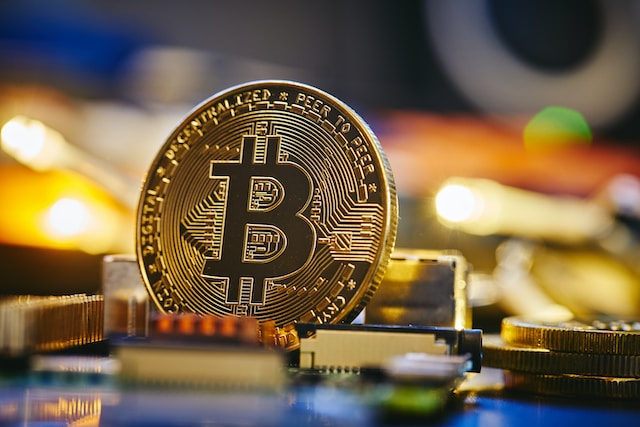
Bitcoin mining is the process of verifying transactions on the Bitcoin network and adding them to the blockchain, a decentralized ledger that records all Bitcoin transactions.
The purpose of mining is to maintain the security and integrity of the blockchain by ensuring that all transactions are valid and that no one can manipulate the system. Miners are rewarded with new Bitcoins for their efforts, which also helps to incentivize participation in the network.
Blockchain technology is a decentralized ledger that records all Bitcoin transactions. Each block in the blockchain contains a cryptographic hash of the previous block, creating a chain of blocks that cannot be altered without changing the entire chain. This creates a highly secure and transparent system that allows for secure and anonymous transactions.
Unlike mining, trading Bitcoin does not require specialized equipment or software. So if traders want to know how to trade bitcoin carefully they need to have a clear knowledge of market trends, technical analysis, and risk management strategies to make informed trading decisions.
Mining Equipment and Software
Bitcoin mining requires specialized equipment and software. There are two main types of mining equipment- CPUs and GPUs. CPUs are the central processing units of computers and are not very efficient for mining. GPUs, or graphics processing units, are much more efficient and are used by most miners. In addition to the hardware, miners also need specialized software to run their mining operations.
Mining software is an essential part of the Bitcoin mining process, as it is responsible for connecting a miner’s hardware to the Bitcoin network and managing the mining operations. There are various types of mining software available, both free and paid, each with its own advantages and disadvantages.
There are also mining software options that are specific to certain types of hardware, such as Bitminter for ASIC mining or Ethminer for GPU mining. These software options may have more advanced features that are tailored to the specific hardware they support.
Overall, choosing the right mining software is crucial for successful Bitcoin mining. Miners should research different options and consider factors such as compatibility with their hardware, ease of use, and features offered before selecting the software that best suits their needs.
Types of mining equipment The most popular types of mining equipment are ASICs or application-specific integrated circuits. These are specialized machines designed specifically for mining Bitcoin and are much more efficient than other types of equipment.
They are expensive to purchase but provide a significant advantage in terms of hash rate, which is the speed at which a miner can solve the mathematical problems required for mining.
The Mining Process
The mining process begins with the verification of transactions on the network. Once a block of transactions has been verified, it is added to the blockchain. Miners then compete to solve a mathematical problem associated with the new block. The first miner to solve the problem is rewarded with new Bitcoins and the block is added to the blockchain.
Finding a block is the goal of Bitcoin mining. Once a miner successfully finds a block, they are rewarded with newly created Bitcoins as well as any transaction fees associated with the transactions included in the block. In order to find a block, miners must first verify transactions on the network by solving complex mathematical equations.
This process is known as proof of work, and it requires significant computing power to complete. Once a miner solves the equation, they can add the block containing the verified transactions to the blockchain.
Adding the block to the blockchain involves broadcasting it to the network for other nodes to verify and add to their own copies of the blockchain. Each block contains a unique cryptographic hash that is linked to the previous block in the chain, creating a permanent record of all transactions on the network. The blockchain is maintained by nodes all around the world, making it a decentralized and highly secure system.
Rewards for miners are an incentive to participate in the mining process and help maintain the integrity of the network. The current reward for mining a block is 6.25 Bitcoins, which is halved approximately every four years.
This process is known as Bitcoin halving and is designed to ensure a limited supply of Bitcoins, with a maximum cap of 21 million. In addition to block rewards, miners also earn transaction fees associated with the transactions included in the block they mine.
Final Words
Bitcoin mining is a fundamental process that maintains the security and integrity of the blockchain by verifying transactions and adding them to the decentralized ledger. Blockchain technology creates a highly secure and transparent system that allows for secure and anonymous transactions.
Mining equipment and software are essential to the mining process. Mining software is responsible for connecting a miner’s hardware to the Bitcoin network and managing the mining operations.
The mining process involves verifying transactions, solving a mathematical problem associated with the new block, and adding the block to the blockchain.
The ultimate goal of Bitcoin mining is to find a block, which is rewarded with newly created Bitcoins as well as any transaction fees associated with the transactions included in the block. The blockchain is maintained by nodes all around the world, making it a decentralized and highly secure system.
